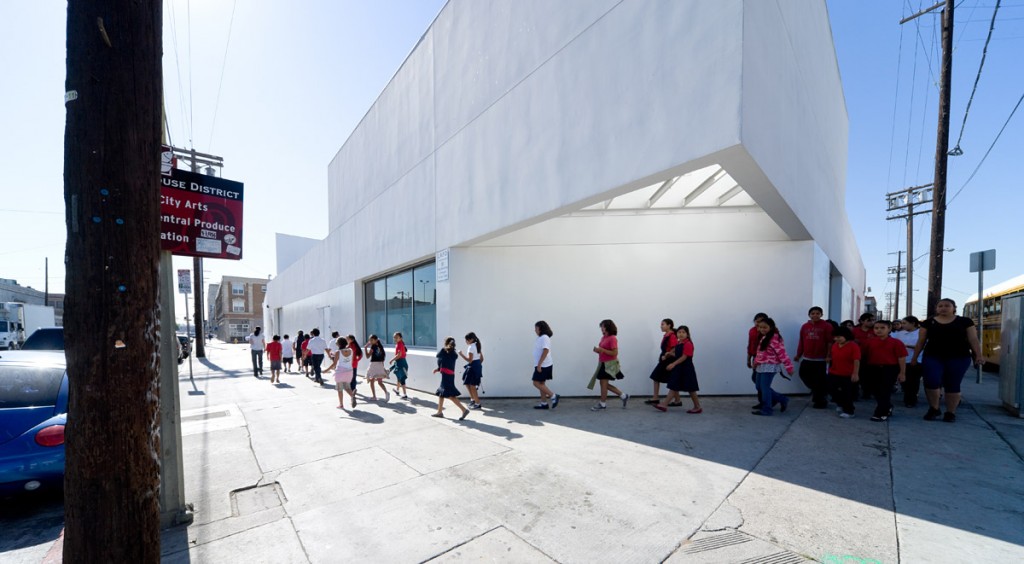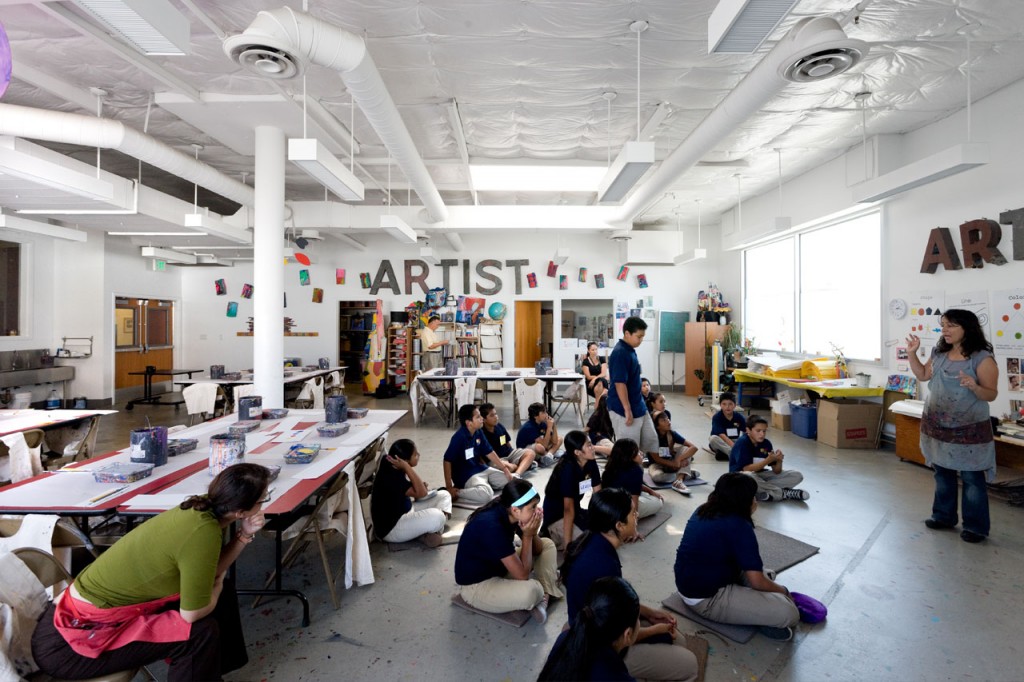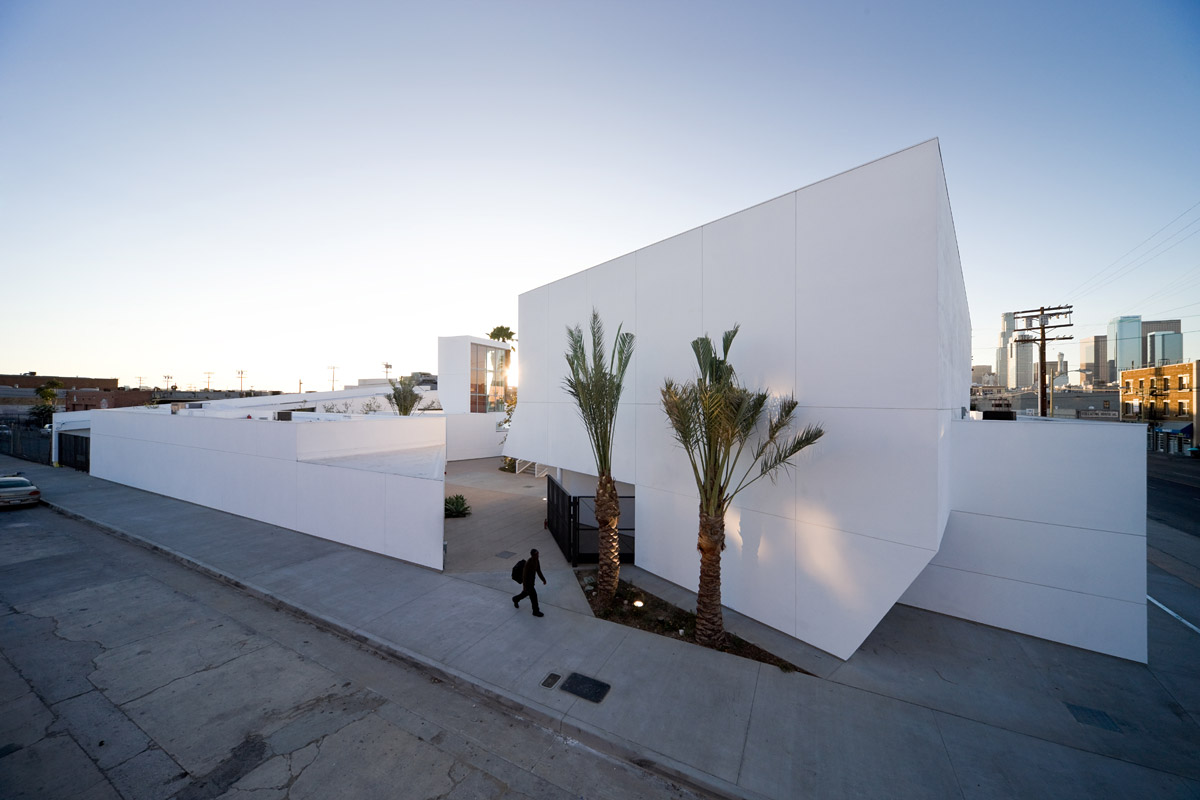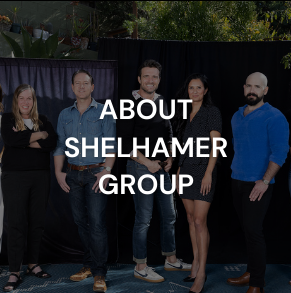While Geoffrey Anenberg has been working tirelessly on multiple projects and passions – like commercial real estate by day and Inner-City Arts by night – this past weekend Yara Jasso from Silverlakeblog caught up with him to chat about a cultural relevance rarely seen in DTLA. She was all ears. Read on for more.
How long have you lived in Los Angeles?
I’m from LA. My grandparents were born in Boyle Heights so was my dad and I grew up in Encino. I live in Silver Lake now.
How did you first hear about Inner-City Arts and what path lead you to your role with the organization today?
I worked in music for a long time, in New York for the most part, then came back to LA for music but ended up getting into industrial real estate, which is a radically different world. I met someone named Vera Campbell who sits on the Board, and she introduced me to the organization and after my first tour I instantly fell in love. She encouraged me to join the board as I was kind of a different voice from a lot of the folks who were already involved.
Inner-City Arts
So how long have you been with Inner-City Arts?
It’s either my 4th or 5th year now on the board.
Are you an artist yourself?
Absolutely. In all kinds of ways.
Why do you think Art education and programs in county schools aren’t given as much weight as say history or science? Seems that art classes are the first to go when budgets are tight.
My best understanding, and I’m not an expert, but our education culture is to test result driven and score driven, and that’s really the trick about the arts, it’s not exactly a quantifiable scoring subject. It’s unfortunate but seems to be the case more and more in this country.
Art studio in session
Glenn Shelhamer (SLB) | Connie Moran-Romero (Founders Board)
Do you see a difference in the kids from when they first arrive at Inner-City Arts to when they’ve been here for a while? How?
Oh, Absolutely. The kids when they’re on campus you can feel their energy – it’s electric. They’re so engaged and so thrilled to be there and it’s across the board with every child, you can feel it off of them. We’ve had an ongoing study with UCLA, Dr. James Catterall who led the study, tracking math and verbal test scores, for kids who attended our programs versus those that didn’t from the same school. And there is a mark difference in both their verbal and math scores, about a 10-15% improvement in their scores. In this artistic environment the skills they learn blanket over everything from the team-work building to thinking outside the box.
Inner-City Arts | The worst Porsche model put to good use
What do you think sets Inner-City Arts apart and is unique from other organizations?I think it’s our specific focus and mission in providing arts education, really high quality arts education, to kids in the city’s most underserved areas and it’s also our relationship with the public school system. As far as I understand, we are the only non-profit in the country that has this type of relationship with the local public school were we’re totally independent, we’re not affiliated, we just have this relationship where they provide the buses and thereby the kids as sort of our clients, and they come to our campus and take our classes as part of their school day and their semester. We’ll do this 14-16 times a semester, so we’re really truly supplementing what should be there.
And we don’t exclusively work with LAUSD but they’re our primary client if you will, but we also serve other schools and we have fee based programs for some schools, and then after school programs for high school students as well as weekend and summertime institutes that focus on specific disciplines.
Lizbeth Navarro (Teaching Artist, Ceramics) | Edlin Velasquez (Programs Admin Associate)
What are some of the biggest challenges you see facing families and these kids in the Los Angeles Metro area?
The first thing that comes to mind is the several blocks and walls outside of our campus. It’s one thing to be in a low income, almost impoverished area like skid row, but it’s another in this specific moment where we’re having such a homeless crisis. When that’s your reality, and you’re driving by and seeing that and accepting that as the norm it’s challenging to see beyond that. Then on the other hand, one of the greatest creative economies is happening right now within the same 2-3 mile bubble. But when the homelessness and rough circumstances are your primary reality, that’s the most tragic part of being a kid growing up in this moment.
What is the non-judgmental art critique? Do children get graded in the courses at all?Yeah it’s really like that. There’s no failure there’s no doing it wrong. The focus is less on the moment and the discipline and more on encouraging them to not be afraid of failure, and to take every moment as a learning opportunity. And that’s best exemplified by our newest program the creativity lab that was started by our co-founder and creative director Bob Bates which is kind of like art and engineering together and the focus is solving complex problems using simple materials. They’re building geodetic domes and marble runs – it’s inspiring and magical. You can just picture being a little kid getting lost in the process of making some of these things.
Geoffrey Anenberg (Board Member) | Yara Jasso (SLB)
“So I say there are 3 things I do and I love them terribly – some of them pay me, some of them I do for fun, and some that I pay to make happen,” Says Geoff.
The campus is absolutely beautiful. What do you love most about it?
You’re right. Every single inch of that place is beautiful! From the landscaping to the architecture to the configuration and lighting – I mean everything. My favorite thing about it is where it is. It’s just such a stark contrast to its surroundings and because it is where it is, the power and beauty of the design and that intention behind building it is all the more pronounced.
Can you tell us some of the people that have inspired you within the organization and outside? Yes – everyone who works there! The teaching artists have such an amazing level of commitment, the administrative folks who do a lot of the grant writing, the outreach and our communications director, and so many more. It’s a really special collection of people.
Inner-City Arts | Michael Maltzan Architecture
Anthony Nicholas (Founders Board) | Glenn Shelhamer (SLB)
Can you tell us a personal story that touched your heart?
Well, it’s not my story, but our CEO’s Bob Smiland. There’s a lot of programs that go on outside of our core classes, for example the Work Of Art Program which funds kids and pays them for art related internships in creative fields, mostly for our high school kids. There was this young man who had gotten his first paycheck and neither he nor anyone in his family had ever had a bank account, they had never walked into a bank and they always felt intimidated, you know, because of their economic situation and for all these other reasons. Well, Bob took this kid in to open his first bank account and the whole family came and it really was something special. It brought the entire board to tears.
And to think that that is a product of our programing and all of our different teachers and staff, it really reminds you that what we’re doing goes way beyond teaching a kid how to make a clay pot.

Inner-City Arts works
If we had a chance to peek into your schedule, what would an average day look like?
So my day job is in real estate development, mostly focused on commercial, restaurants, art galleries, and a lot of the stuff in the arts districts – Hauser Wirth Schimmel, Stumptown, 356 Mission…So I say there are 3 things I do and I love them terribly – some of them pay me, some of them I do for fun, and some that I pay to make happen. I don’t put an emphasis on one or the other based on those things, I just love being engaged with Inner-City Arts and I love the work that I do and I sort of have this MO – if I’m going to help you find a space or build something cool, you’re going to come see Inner-City Arts and get involved in your civic duty to benefit these kids that live in the same little bubble.
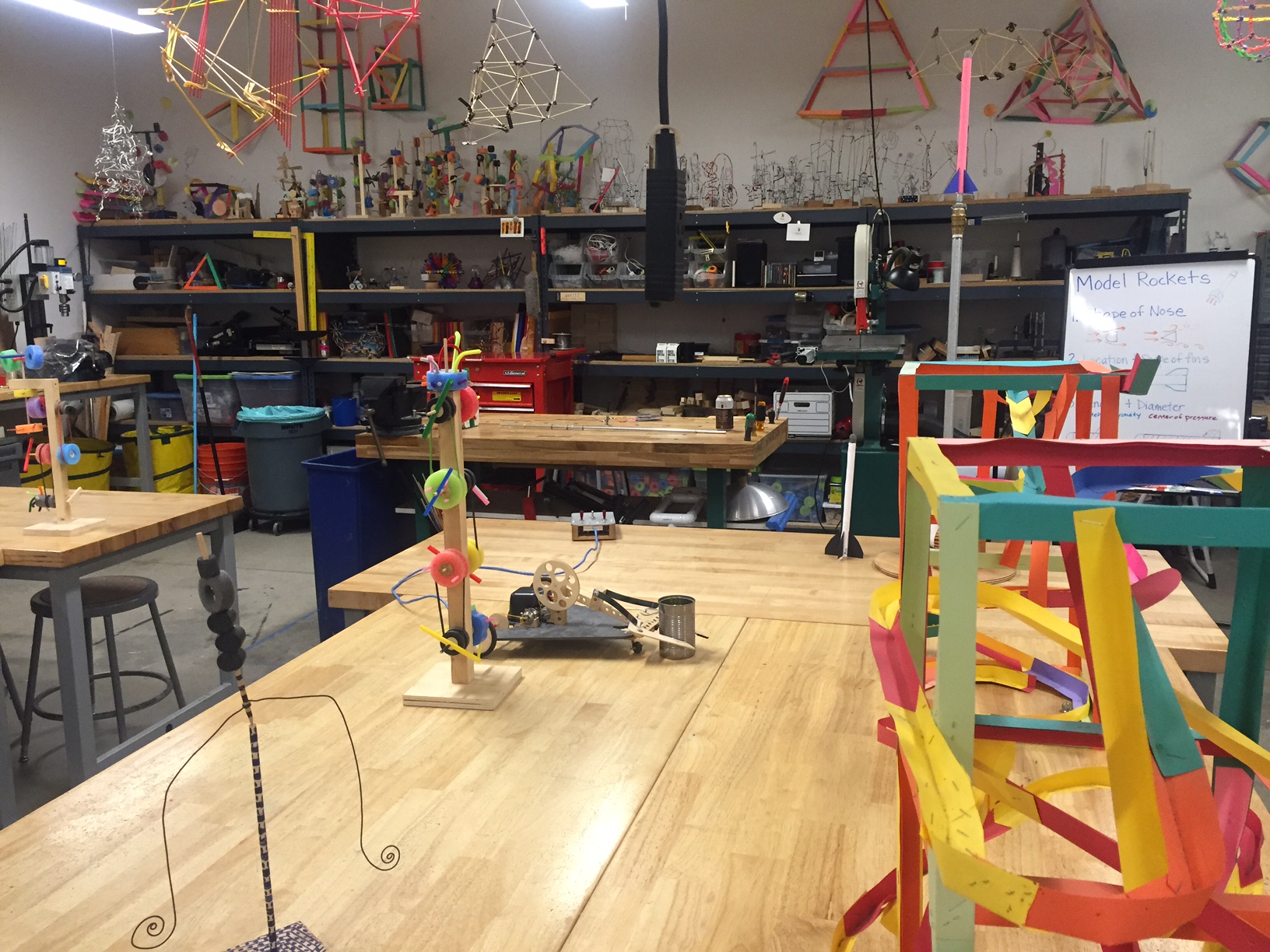
Bob Bates (Co-Founder and Artistic Director)
Some would regard art education as a luxury and that the focus should be on more ‘practical’ skills, what would you say to these people?
You know, I don’t know enough about the research behind arts education even though we’ve demonstrated these improvements in test scores from our personal experience with Inner-City Arts students, but really art is in everything that we do. It distinguishes average from special in every arena, from cooking to writing a legal document to planting a garden. And there’s something about a safe environment, a failure free environment to engage in this creative process and getting drawn deeply into your creativity and finding moments where the stuff you’re learning in other classes is connecting on a meditative level, if you will.
I mean what are you learning in the 4th and 5th grade, you’re learning how the world works, and really the blueprints for life.
What inspires you everyday?
I work to create the city I want to live in. What greater joy is there than finding something that’s so awesome and sharing it with your community and friends and doing cool things to help support it.
Inner-City Arts
720 Kohler St
Los Angeles, CA 90021
(213) 627-9621
Your Los Angeles Residential Realtor
I’m a local real estate agent with The Shelhamer Real Estate Group, and It would be my pleasure to help you find the perfect property to call home in Downtown Los Angeles, or if you’re thinking about selling a house, condo, or multi-family building in, Los Feliz, Silver Lake, Atwater Village, Glassell Park, Mount Washington, or Downtown Los Angeles, it would be a privilege to help you get top dollar for the sale of your property.
Let’s chat sometime. 310-913-9477 or contact me



